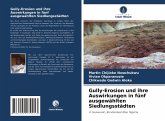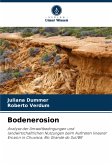
Broschiertes Buch
8. August 2024
Verlag Unser Wissen

25,99 €
Versandfertig in 6-10 Tagen
Broschiertes Buch
26. September 2017
LAP Lambert Academic Publishing
25,99 €
Versandfertig in 1-2 Wochen
Broschiertes Buch
8. August 2024
Ediciones Nuestro Conocimiento
25,99 €
Versandfertig in 6-10 Tagen
Broschiertes Buch
8. August 2024
Edizioni Sapienza
25,99 €
Versandfertig in 6-10 Tagen
Broschiertes Buch
8. August 2024
Edições Nosso Conhecimento
25,99 €
Versandfertig in 6-10 Tagen
Broschiertes Buch
8. August 2024
Editions Notre Savoir
Ähnliche Artikel

Broschiertes Buch
23. Januar 2024
Verlag Unser Wissen

Broschiertes Buch
2024
Verlag Unser Wissen

Broschiertes Buch
in Isiukwuato, Bundesstaat Abia, Nigeria
20. November 2021
Verlag Unser Wissen

Broschiertes Buch
6. Juni 2024
Verlag Unser Wissen

Broschiertes Buch
Kartierung der ökologischen Fragilität der Gemeinde Ubatuba/SP
15. Februar 2024
Verlag Unser Wissen

Broschiertes Buch
Analyse der Umweltbedingungen und landwirtschaftlichen Nutzungen beim Auftreten linearer Erosion in Chuvisca, Rio Grande do Sul/BR
13. November 2024
Verlag Unser Wissen

Broschiertes Buch
Verhalten des Bodens nach einem Brand
27. April 2024
Verlag Unser Wissen

Broschiertes Buch
13. Mai 2024
Verlag Unser Wissen

Gebundenes Buch
1963.
14. Januar 1964
De Gruyter
Ähnlichkeitssuche: Fact®Finder von OMIKRON
